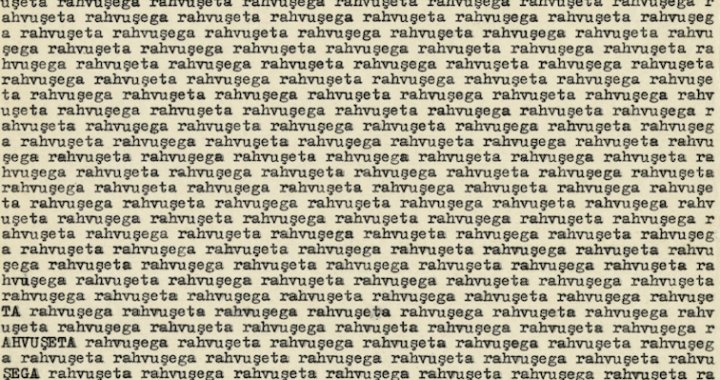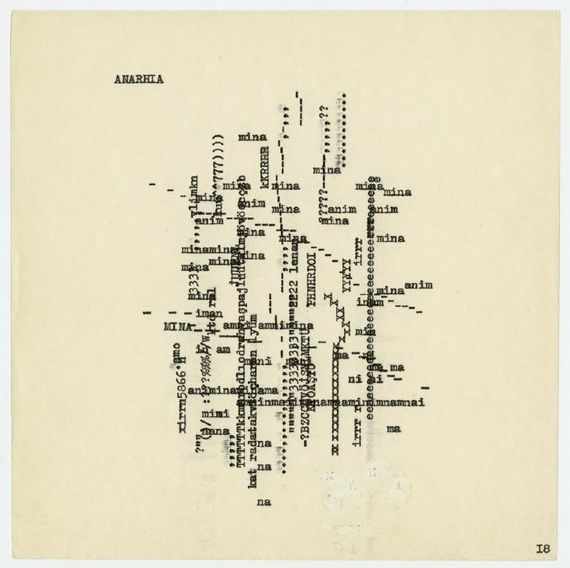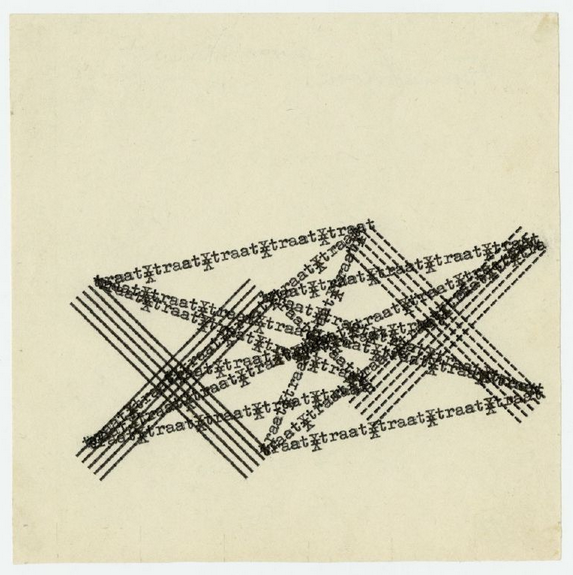
Raul Meel, Anu Vahtra and Dénes Farkas at CAC
Arterritory.com
30/01/2015
MEEL. VAHTRA. FARKAS_idealist function
Contemporary Art Centre (CAC), Vilnius
January 31 – March 18, 2015
An idealist once wondered – How big is an idea? How big is a feeling? How much space does one memory take up? – and then suddenly, she was in many places at once. The exhibition MEEL. VAHTRA. FARKAS_idealist function presents three Estonian artists from different generations whose work shares the common ground of spatial poetry. This idealist function is based on dialogue inspired by the first concrete poetry manuscript, “The Club” (1968–1969), by Raul Meel.
MEEL. VAHTRA. FARKAS_idealist function is a three-way “trialogue” that aims to question simple and basic matters within the world inside and around us. Raul Meel, Anu Vahtra and Dénes Farkas have come together to create a poetry of the invisible – of infinite, unexpected possibilities in which knowledge of the world tends to dissolve the solidity of the world, leading to a perception of all that is infinitely in transformation.
Take a closer to look at the event and read an express interview with the exhibition’s curator, Maria Arusoo.

How would you like to introduce our readers to the concrete/spatial poetry genre?
Concrete poetry, as such, emerged in Brazil in the 1950s. Interestingly enough, Raul Meel, who lived in Soviet Estonia, did not know anything about the similar movement in Brazil, and developed the method independently – which he called “typewriter poetry”, and his works as "typewriter drawings”. All of the geometrical forms are created by deconstructing words and sentences, and repeating letters. The typewriter always played a significant role in concrete poetry. And in terms of Meel’s works, the sound of the poem also plays an important part. Apparently, he always reads his poems out loud while working, .
What should everybody know about the Estonian artists Raul Meel, Anu Vahtra and Dénes Farkas, and their work in the context of concrete poetry?
Raul Meel, Anu Vahtra and Dénes Farkas are artists from different generations. Meel is a living legend of Estonian art. He has great importance to Estonian art history and also to the present day because he is still an actively working artist, as are Vahtra and Farkas.
Two concrete poetry manuscripts by Raul Meel from the late 60s – “The Club” and “Proper Names” – were the starting point for this exhibition, however, MEEL. VAHTRA.FARKAS_idealist function itself does not deal with concrete poetry as such; rather, I have described it as being more like spatial poetry. Poetry is used as a method in the exhibition; it is a feeling and way to transfer meanings and thoughts. While Meel deals precisely with words and poetry, and Farkas deconstructs texts, Vahtra creates poems through space without using any means of language. So, the spatial poetry played out in the exhibition is done with words, language and space itself.

How big of a role does concrete poetry now play in the Estonian art scene?
Concrete poetry, as such, was more prominent in the late 60s-70s, and Raul Meel was the main figure back then; he made the first manuscripts. Language is important in the works of many Estonian artists, but I also do find that Raul’s works are really contemporary and sort of timeless; one can’t really say that poetry can be worn out by time. In addition, Vahtra, Farkas and Meel – they and their works all play an important role in the Estonian art scene.
What inspired you to make this kind of event, and why right now?
It all started thanks to a kind invitation by Kestutis Kuizinas, the Director of the Contemporary Art Centre (CAC), and CAC to make an exhibition here.
For some time already I had some ideas about a Farkas and Meel dialogue, and now adding the spatial concept of the North and South Halls of CAC, it all took on form. Also, Vahtra – with her great approach, seemed like a good match. It was intriguing to create an intimate dialogue around the notion of poetry in space, and space in poetry.
I was interested in combining together some historical works with new commissions.
As I mentioned before, the Estonian concrete poetry manuscripts by Raul Meel served as the inspirational starting point for the exhibition, after which everything started to roll.
In 2013 we (the Center for Contemporary Arts Estonia) commissioned Dénes Farkas' works for the Estonian pavilion at the 55th Venice Biennale – he had this amazing large-scale installation which hasn’t been exhibited anywhere else except for Venice and the Kumu Art Museum in Estonia. But now, in the North Hall of CAC, there will be a part of it – a library and 80 framed books together with works by Raul Meel.
Anu Vahtra is doing a special site-specific work at CAC, inspired by the location itself, and Raul Meel’s work is called “Transformations of Life”.

Could you describe the exhibition's visual layout?
The exhibition will be in the North and South Halls of CAC, and there will also be one installation by Farkas set up in an outdoor space.
In the South Hall the dialogue between Vahtra and Meel builds up with abstractions and geometrical forms, and some emptiness – which leaves space for inner thoughts.
The North Hall is filled with language and books in a myriad of forms. There's the Dénes Farkas library with 10 000 books, and an additional 80 of his framed books. And of course, Raul Meel’s “The Club” manuscript and some more plays with and about words.
It is an overwhelming environment in which one is not buried under thoughts and meanings, but they [the thoughts and meanings] are, nevertheless, experienced almost physically.
How would you characterize the overall feeling/atmosphere of the exhibition?
It's hard to describe it so soon after a week-long installation process, since at the moment (at least for me), it is all still in the technical stage, and my mind is filled with hundreds of frames, nails and many other matters.
But all in all, I think that in this exhibition the visitor has much space for her/his own thoughts. There are many narratives being played out, and one can go really in-depth, as all of the works allow for this. It is an inspiring world of words, language and spatial games.
Contemporary Art Centre
Vokieciu str. 2, LT–01130
www.cac.lt